I'm embarassed to admit that I don't really like museums (this is Tom writing -- Sharon is mch more cultured!). They're too static.
The Weifang Kite Museum, however, really caught my attention. It's nicely done, and of course the subject matter is near and dear!
The museum is located right on the river which winds through downtown Weifang. It's a beautiful location, and based on the construction we saw going on, the museum will become even more dramatic when the river park is completed.
The huge doors to the museum are guarded by a large cement statue cast in the socliast realist style. The statue wasn't memorable, but check out the mural behind it! It's a larger-than-life ode to kites of all kinds -- a fitting introduction to the treasures within... After entering the museum, we found ourselves in a massive lobby, anchored by a wonderfully-lively statue of a boy and his grandfather flying a kite. The scene was surprisingly whimsical. The pictures below don't do it justice, since the tableau really captured the generation-bridging wonder of flying kites together. |
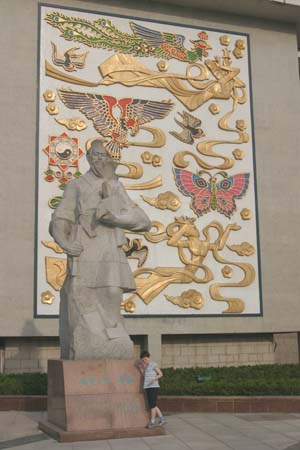 |
 |
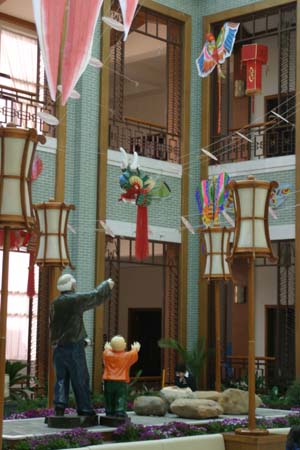 |
Luckily for them, the boy and his grandfather weren't just flying one kite -- they got to fly an entire roomful of them! We tried to capture the panorama of the lobby's kite-collage:
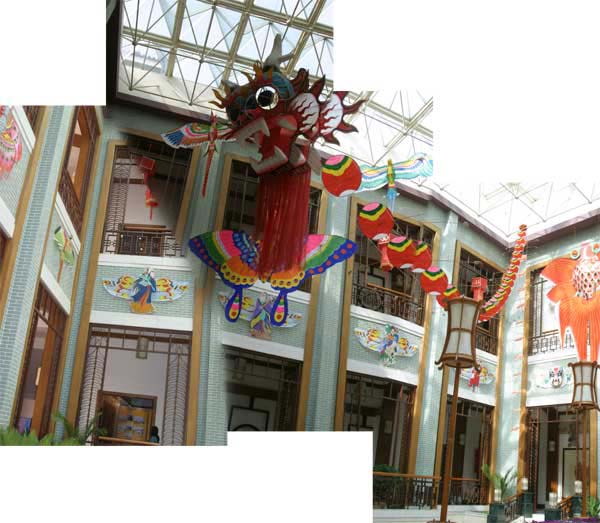
Surrounding the lobby courtyard were two levels of exhibit halls. There weren't many people in the museum that day, so we were immediately led to its main attraction -- a couple of living kite legends:
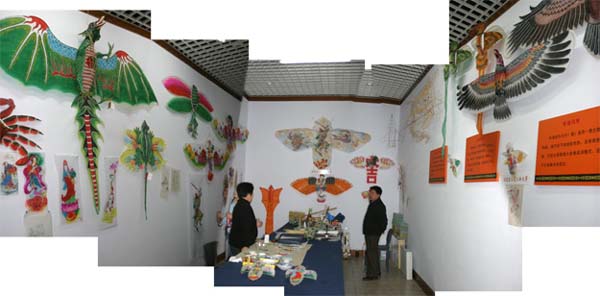
I'm embarassed to say I've forgotten their names, but I haven't forgotten their work, and their smiles! This huband and wife team are famous kite makers. She paints and colors, and he creates the frames. Together they made all of the kites on the walls. Best of all, they continued to make new kites, and were only too happy to show us how they did it.
The first step was the art, which was sketched and then painted in. I asked if she worked from a book. "Of course not!" she said. "They are all from my imagination."
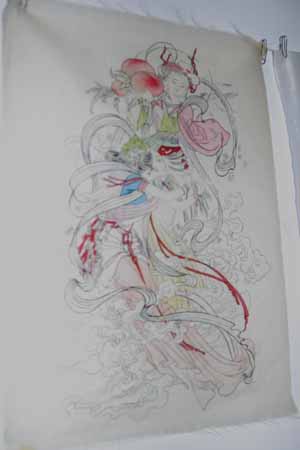 |
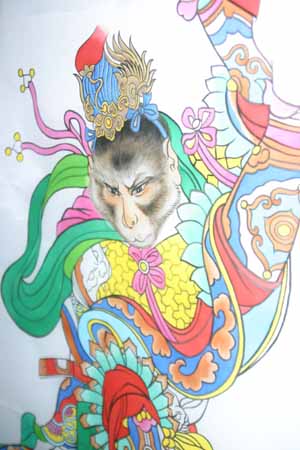 |
The next step was the creation of the frames, made from bamboo. This was particularly fascinating, since each frame had to be custom made for the painting, yet the end result had to fly! Once the frames where completed, the silk-paper was trimmed and carefully glued to the frame:
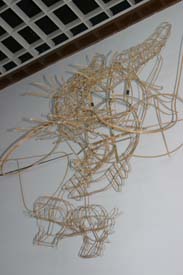 |
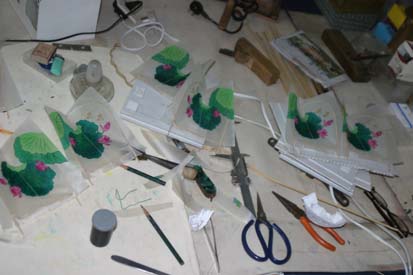 |
We didn't have time to watch them complete an entire kite, but we did quickly snap shots of their treasures on the walls of their workshop:
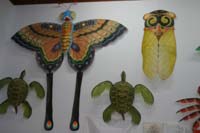 |
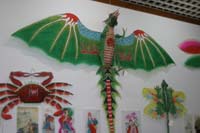 |
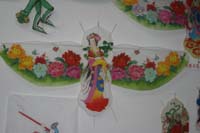 |
 |
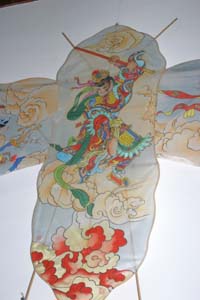 |
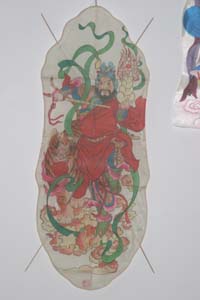 |
Now that we understood how basic kite-making was done, it made it much easier to appreciate the craftsmanship that went into the panoply of kites that filled the exhibit halls.
| Believe it or not, this kite is 3-D. The monks in the front actually stick out several inches from the ones in the back. The whole thing is about 4 feet tall. The guides assured us that it did (and still would) fly. Amazing! | 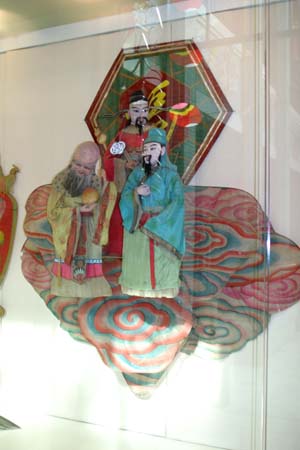 |
We saw lots of much-simpler kites. While their construction was straight-forward, the artwork was anything but:
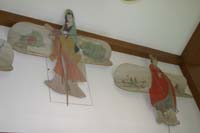 |
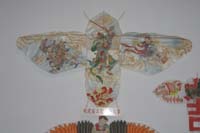 |
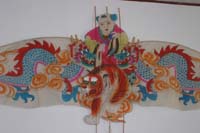 |
Some of the kites were much simpler. My favorites of these types were built around a single Chinese character, which would float in the sky:
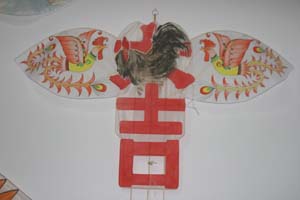 |
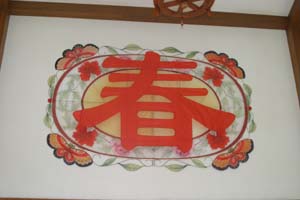 |
We next ecountered a bunch of interactive kites! One of them had little circular fans installed, so that when the wind blew, figurines on the front of the kite would move their arms and heads. Too bad that picture didn't come out! But the whistling kite did -- this one had wood whistles of all different shapes and sizes mounted on the kite:
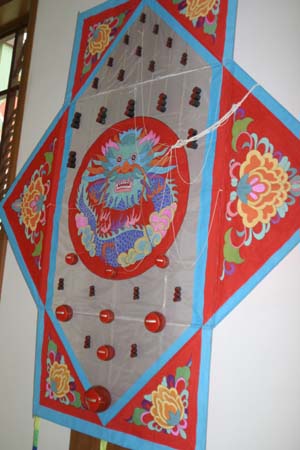 |
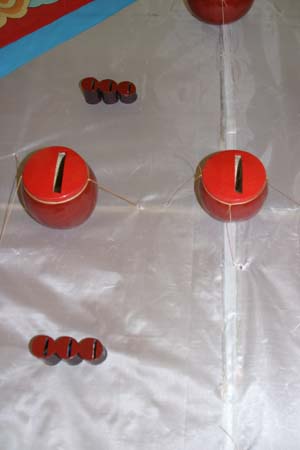 |
Too bad the museum didn't have a recording of what this one sounded like as it flew!
The craziest kites were two huge Buddha kites:
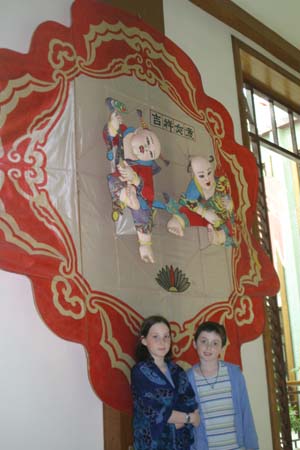 |
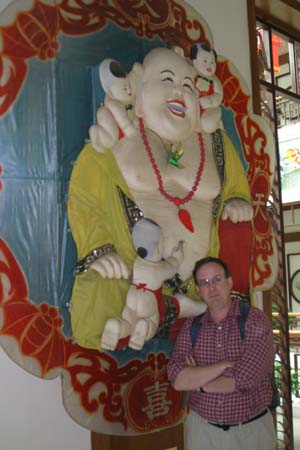 |
The one on the right was especially playful. Notice how the baby is pointing at the Buddha's belly button? If you put your finger in that hole, the Buddha would make a laughing sound! I'm not sure if that was part of the original kite design (after all, how would the wind get in there?), but it was fun nevertheless.
One of the rooms had more modern kites, starting with my personal favorite -- a kite made to commemorate the founding of the People's Republic of China in 1949:
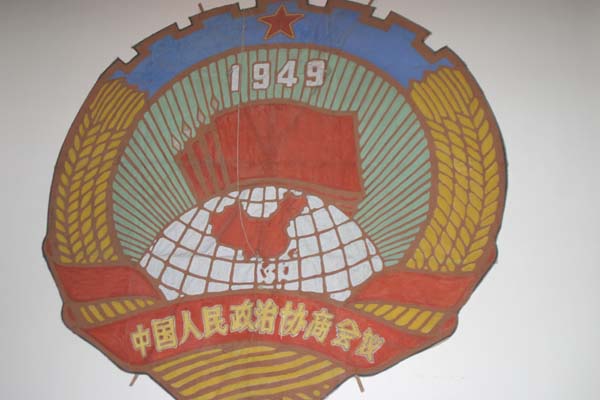
The other modern kites, however, were surprisingly dull. They used high-tech materials and could fly higher, but they didn't come close to the artistry (or the ingenuity) of the earlier specimens.
Finally, right as we were about to leave, we were literally grabbed by an older man and hustled up to a special exhibition. I guess that business was slow, and they wanted to make sure their only foreign visitors stopped by.
As it turned out, the hall was filled with the personal collection of Kite Festival memoribilia, collected by the man who had grabbed us and pulled us in. He was quite a character, and was thrilled to show us pins from every year, admission badges, and all of the official documents from each of the 22 years. In two of the years he got to design the Festival's logo, so of course his collection was especially deep in those years!
It was interesting to see how un-commericalized the Festival remained. Though some of the logos were lovely, there were no T-shirts, nor bumper stickers. Clearly a market opportunity!
Our host could have rhapsodized for hours, but we got tired and begged off (by this point, the girls and my mom were down in the lobby, having long lost interest in the museum's static displays).
As we left to leave, he gave us one of the pins with his logo on it. He clearly wanted a photo to add to his collection of foreign "dignataries," and we were only too happy to oblige (he's the one on the left). |
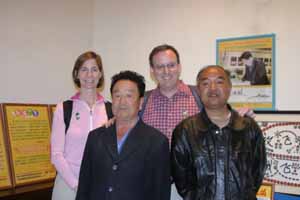 |
Our interaction with the kite-makers in the museum whetted our appepite to learn more, so we were thrilled by the opportunity to visit a real kite factory!